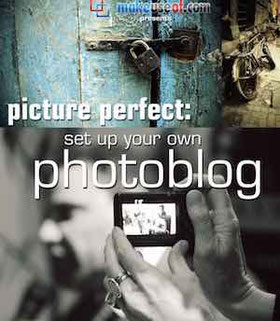How to Make Brilliant Photos With a Short Telephoto Lens
Short telephoto lenses are one of the most versatile and useful types of lens you can buy. But before we get into why that is, let’s define the term short telephoto lens. It is a lens which is slightly longer than “normal”, which depends on the camera format you are using, see below.On a full-frame camera, lenses with a focal length between 85mm and 135mm are considered short telephoto lenses. For APS-C cameras, lenses with focal lengths between 50mm are 100mm are short telephotos. On a Micro Four-thirds camera, lenses with focal lengths of 40mm to 70mm are short telephotos.

Prime versus zoom lenses
Of all the lenses that cover these focal lengths, primes are the most exciting. They tend to be smaller than zoom lenses and have the additional benefit of a wide maximum aperture, allowing you to experiment with bokeh and shoot in low light conditions. They are also less expensive than common telephotos like a 70-200mm zoom.If you have a full-frame camera, you can’t go wrong with an 85mm prime lens – one of my favorite focal lengths for full-frame. If you have an APS-C camera, a 50mm prime lens, or the 55mm end of an 18-55mm kit lens, is a short telephoto. 50mm primes are great value for money and go well with APS-C cameras.
If you have a Micro Four-thirds camera there is a choice of prime lenses with focal lengths of 42.5mm and 45mm you can buy.
How to use a short telephoto lens
Now you know what a short telephoto lens is, let’s take a look at how you can use one to make good photos.Short telephoto lenses and portrait photography
Short telephoto lenses are ideal for portraiture. I’m quite happy to take one camera and one lens – a short telephoto – on a portrait shoot. This simple approach helps me concentrate on communicating with the model and building rapport, essential for creating good portraits.I’ve used two short telephotos for portraits – an 85mm f/1.8 lens on a full-frame camera and a 56mm f/1.2 lens on an APS-C camera. Both are great lenses, super-versatile for portraiture. You can get close to your model and fill the frame with her face, or stand further back and fit her entire body within the frame.
Even at the distance required for this, you are still close enough to talk to your model and direct her. Try doing that with a 200mm lens from a distance – it’s much harder.
Short telephotos help bring a sense of intimacy to your portraits that is harder to obtain with longer focal lengths. I made both these portraits with a 56mm f/1.2 short telephoto lens on an APS-C Fuji camera.

I made this one using a 50mm lens on an APS-C camera. The aperture was set to its widest setting of f/1.8 to make the background go out of focus.

A technique you can try when making portraits with short telephoto lenses is to find something to shoot through, such as grass, flowers or the leaves of a tree, while using a wide aperture to throw it out of focus.

Short telephoto lenses and close-up photography
If you don’t have a macro lens, short telephotos are also ideal for close-up photography. Use them either with extension tubes, or a close-up lens that screws onto the front of the lens like a filter. Both tools reduce the minimum focusing distance of your lens and let you take interesting close-up photos of subjects like flowers.
Short telephoto lenses and landscape photography
Short telephotos also have their place in landscape photography. They come in useful for isolating part of the landscape and creating compositions that are flatter and more minimal than what you can create with a wide-angle lens.I used a 56mm short telephoto to create the following landscape photo, with a neutral density filter to obtain a shutter speed (exposure time) of 180 seconds. As a result, the sea and clouds are transformed into a smooth blur. The figures on the distant pier are also blurred.

Short telephoto lenses for street and travel photography
Short telephoto lenses are also good for street and travel photography. They let you keep a little distance from the subject, and help you create simpler compositions by including more of the background.If you ask somebody you see on the street whether you can take their photo, then a short telephoto lens lets you do so without getting too close and intruding on their personal space.

Vintage lenses
Finally, there is another type of short telephoto prime lens for you to consider. Vintage manual focus lenses are available on Ebay and can be used on your camera with an adapter. These lenses are easiest to use on cameras with electronic viewfinders which have tools like focus peaking to help you focus accurately.I made this portrait with a Helios 58mm f/2 lens. This lens is known for the swirly bokeh effect you can see in the background.

Conclusion
Short telephoto lenses are versatile and relatively inexpensive. They help you create beautiful photos, especially portraits.What lenses do you prefer to use for portraits and other subjects? Let us know in the comments!
Mastering Lenses
If you’d like to learn more about buying and using lenses then please check out my popular ebook Mastering Lenses: A Photographer’s Guide to Creating Beautiful Photos With Any Lens.
Share this article.






































